The first salmon seen in southern Oregon’s Klamath River basin since 1912 was spotted this fall in a Klamath River tributary some 230 miles from the Pacific. The fish, a wild Chinook, is the first documented fish to venture into the upper river since four dams on the mainstem Klamath were removed over the course of the last several years.
The sighting occurred only months after the last of the four dams was taken out in a joint effort by water utility managers in Oregon and California, with help from Indigenous tribes. The four dams effectively halted any anadromous fish runs in the Klamath River for more than a century.
“This is an exciting and historic development in the Klamath Basin that demonstrates the resiliency of salmon and steelhead,” said Debbie Colbert, director of the Oregon Department of Fish and Wildlife. “It also inspires us to continue restoration work in the upper basin. I want to thank everyone that has contributed to this effort over the last two decades.”
Since the last of the four dams on the river came out this past summer, fisheries biologists from both California and Oregon have monitored the river for sightings of Pacific salmon that might pioneer their way into the river above the dam sites. In collaboration with the Klamath Tribes – a collective of Indigenous tribes that once counted on the annual Klamath River salmon migration for subsistence – biologists from both states are working on salmon and steelhead restoration, as well as bringing back other anadromous fish, like Pacific lamprey and ocean-going bull trout.
“The return of our relatives, the c’iyaal’s (Indigenous term for salmon), is overwhelming for our tribe. This is what our members worked for and believed in for so many decades,” said Roberta Frost, Klamath Tribes secretary. “I want to honor that work and thank them for their persistence in the face of what felt like an unmovable obstacle. The salmon are just like our tribal people, and they know where home is and returned as soon as they were able.”
The return of salmon to once-barren rivers that have been reconnected to the sea is not unheard of. In Washington, when two dams — Glines Canyon and Elhwa — blocking fish upstream migration on the Olympic Peninsula’s Elwha River were removed a decade ago, both Chinook salmon and steelhead repopulated the river without the need of stocking hatchery fish or reintroducing fish from other river drainages.
In the case of steelhead, it’s believed that resident rainbows that lived in the river above the dam migrated to the ocean once the way to the sea was clear. While other Pacific salmon have returned to the Elwha, Chinook and steelhead are enjoying the most success. Both pink and chum salmon populations in the river remain at critically low levels.
The Klamath dam-removal project was much more ambitious, and involved four dams spread over about 200 river miles. To see success so soon after the last dam was taken out is especially rewarding to biologists. Mark Herefor, project leader for ODFW’s Klamath Fisheries Reintroduction effort, said his team was thrilled once it was confirmed that the big fish they spotted was, indeed, a Chinook.
“We saw a large fish the day before rise to the surface in the Klamath River, but we only saw a dorsal fin,” Hereford said. “I thought, was that a salmon or maybe it was a very large rainbow trout?”
When the team returned to the tributary on Oct. 16 and Oct. 17, they were able to confirm that salmon had returned to the tributary for the first time in 112 years. In time, ODFW biologists hope that more Chinook salmon will return, and it’s hoped that steelhead, which still migrate up the Klamath and its largest tributary in California — the Trinity — will find their way above the former dam sites, too. Eventually, bull trout from the upper Klamath could begin to migrate to the sea, and pioneer coho salmon and Pacific lamprey could return to the basin, as well.





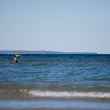
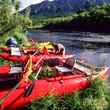




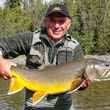
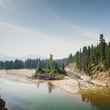



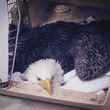




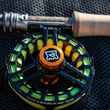
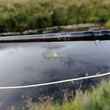



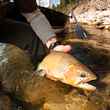
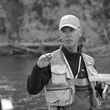
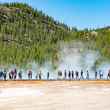

Comments
Paul Dunn replied on Permalink
So amazing! This must have been a thrill to see. I've worked on the Klamath from the coast to the confluence with the Shasta River for decades, and fished and rafted from Keno down for a few years. What blew me away is that Crater Lake is a primary source! See Fort Klamath.
Anonymous replied on Permalink
Hell yeah!!!
David E Straub replied on Permalink
This is indeed a beautiful event, one of epic proportions in my mind. I doubt that I will ever have the chance to fish in these fisheries, but just knowing that they are returning is more than enough for me. Thank you all .... take care.
Pages